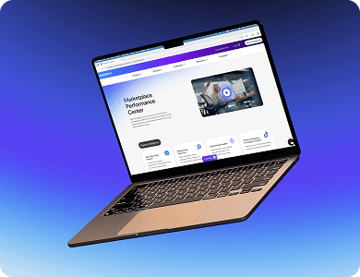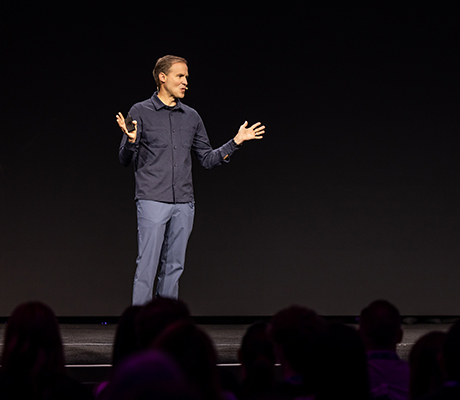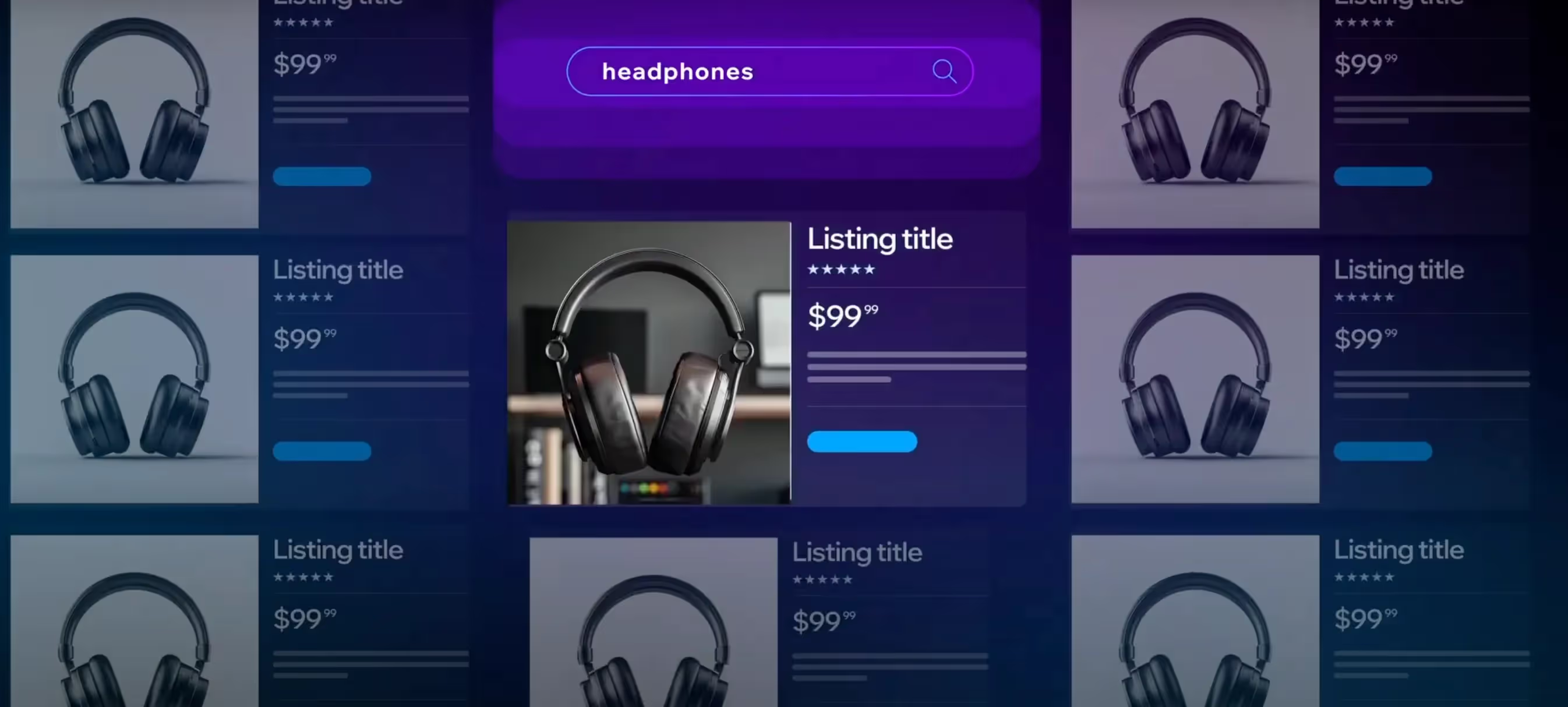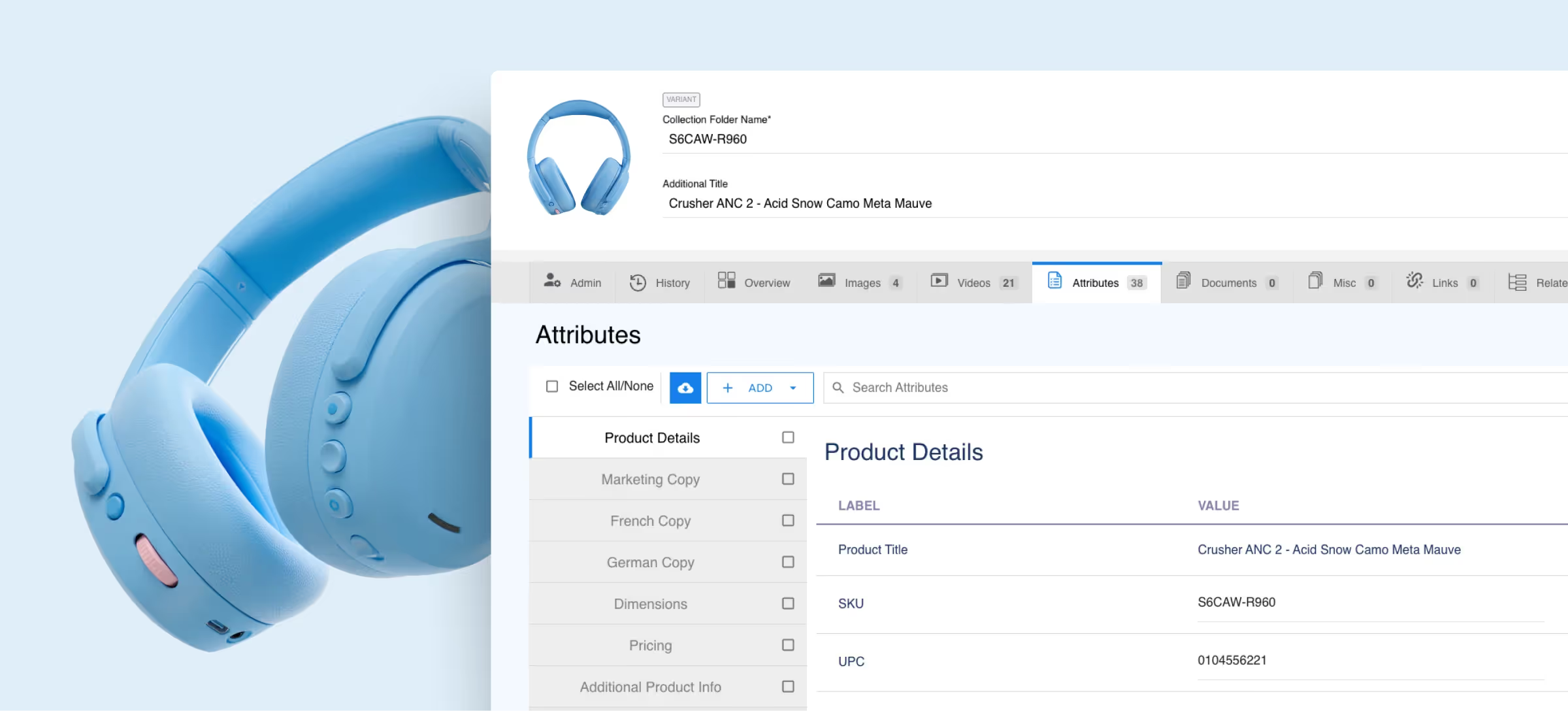Direct-to-Consumer (DTC) Definition and Benefits
From Warby Parker to Gymshark, direct-to-consumer (DTC) brands are reaching customers directly and winning big. In this article, we’ll explore what DTC means, how it works, and why it’s more relevant than ever.
What Is Direct-to-Consumer?
Direct-to-consumer, or DTC, is a business model in which brands sell straight to customers, skipping the usual middlemen like retailers or distributors. That direct connection gives companies full control over the experience and keeps them in close touch with the people who actually use their products.
DTC is booming, thanks to ecommerce and shoppers who want more than just a product. Instead, they want personalization, transparency, and a real connection with the brands they love.
Cutting out the middleman also lets companies react faster to feedback, tweak their offerings, and build stronger loyalty. As ecommerce gets more competitive, DTC offers a chance to stand out, create meaningful relationships, and grow strategically. For brands and customers alike, it’s quickly becoming the smarter way to do business.
How Does DTC Differ from Traditional Retail?
With DTC, the direct connection to consumers changes everything, from pricing and marketing to customer experience and data collection. Here’s a closer look at how DTC stands apart from traditional retail.
Sales Channel
In wholesale or retail, products pass through several hands: from manufacturer to wholesaler, then to a retailer, and finally to the customer. With DTC, products go straight from the brand to the buyer, eliminating the middlemen entirely.
Customer Relationship
Retailers typically control the connection with customers, leaving brands with little information about who actually buys their products. DTC flips that, allowing brands to communicate directly, gather feedback, and build loyalty.
Pricing and Profit Margins
In retail, brands sell in bulk at lower margins, and retailers set the final price. DTC lets brands keep a larger share of profits, since they decide how products are priced, positioned, and promoted.
Marketing and Customer Data
Retailers usually handle marketing and capture customer data, limiting consumer insights for brands. DTC lets brands tell their story, run campaigns, and collect first-hand data for personalization and growth.
Scalability and Experience
Retail gives instant reach—but less control. DTC scales more gradually, but delivers a curated, consistent experience from purchase to post-sale support.
Why Direct-to-Consumer Matters Today
More than a passing trend, the DTC model aligns perfectly with how modern customers want to shop—and how forward-thinking brands want to grow. It’s a win-win for both parties, and it matters more than ever before. Here’s why:
Stronger Customer Relationships
By connecting directly with buyers, brands can personalize communication, offer better support, and build loyalty programs that retailers can’t match.
Full Control of Brand Image & Experience
From marketing to packaging, brands control every detail, ensuring consistency, authenticity, and trust.
Higher Profit Margins
Cutting out wholesalers means keeping more revenue per sale, which can be reinvested into innovation and growth.
Access to Customer Data
DTC gives brands first-hand insights into preferences and behavior, enabling smarter decisions and tailored experiences.
Flexibility & Agility
Brands can launch products, test ideas, and pivot quickly without retailer roadblocks, giving them an edge in an increasingly unpredictable market.
How the Direct-to-Consumer Business Model Works
DTC means brands take full ownership of the customer journey, from product design all the way through post-purchase engagement. With no third parties managing sales, marketing, or distribution, the entire value chain is reimagined with the customer at the center.
Let’s dive deeper into how the direct-to-consumer model operates in practice:
Customer-Informed Product Design
In traditional wholesale, retailers often dictate what gets made and when. DTC flips that around: brands can listen directly to customers, use real-time sales data, and quickly design products people actually want. This leads to quicker product cycles, more relevant offerings, and less risk of overproduction.
Integrated Sales Channels
For DTC brands, the storefront is wherever the customer is, whether that’s a website, a mobile app, a social platform, or even a pop-up shop. These channels drive sales, provide valuable customer insights, and help build stronger connections.
Data-Driven Marketing & Retention
DTC brands own their customer data, meaning they personalize campaigns, test new pricing, and fine-tune direct-to-consumer marketing strategies on the fly. The relationship goes beyond the checkout, with loyalty programs, subscriptions, and direct communication bringing customers back.
Order Processing & Payment
In DTC, every order goes straight through the brand’s own channel—no retailer involved. Payments are handled directly, and brands can use the checkout moment to offer upsells, bundles, or subscriptions that increase revenue.
Warehousing & Fulfillment
Once an order is placed, it’s packed and shipped from a brand warehouse, a 3PL partner, or even straight from the manufacturer. Many direct-to-consumer brands go beyond the basics with custom boxes, inserts, or samples that turn delivery into a branded experience.
Shipping & Delivery
Getting the product into customers’ hands is where the DTC experience really shows. Some brands manage shipping in-house, while others team up with providers like UPS or Shopify Fulfillment. Speed, convenience, and eco-friendly options often become key differentiators.
Customer Service & Retention
Once the order arrives, the real relationship-building begins. Easy returns, personalized follow-ups, and loyalty programs keep customers engaged. When done well, these touchpoints turn one-time buyers into repeat customers—and repeat customers into true brand advocates.
Key Benefits of the DTC Model
DTC gives brands more control, closer customer connections, and the ability to grow smarter and faster. By selling directly, brands can capture insights, boost margins, and create experiences that traditional retail just can’t match.
Here’s a closer look at the key benefits.
Higher Profit Margins
Without wholesalers or retailers taking a cut, brands keep more revenue from each sale. Selling at full retail prices instead of discounted wholesale rates helps boost both revenue and profitability.
Stronger Customer Relationships
DTC connects brands directly to customers through websites, apps, and social media. This means brands can build loyalty, build community, and encourage repeat business over time.
Full Control over Brand Experience
Brands manage every touchpoint, including marketing, packaging, support, and more. This consistency strengthens brand identity and allows for a truly personalized customer experience.
Access to Customer Data
In traditional retail, stores hold the data. But DTC brands collect first-party information, (emails, purchase history, and preferences), meaning they can target marketing, make smarter product decisions, and tailor recommendations.
Faster Innovation and Agility
With a steady flow of feedback, brands can test products and adjust direct-to-consumer strategies with no delays. No retailer approvals, no waiting for customer responses—just a swift response to customer needs in real time.
Improved Customer Experience
DTC brands handle fulfillment, packaging, and support themselves, turning every purchase into a memorable experience. From personalized touches to fast, hassle-free service, they make shopping feel special in a way retailers often can’t.
Greater Marketing Control
Brands call the shots on advertising and messaging. This freedom lets them craft compelling stories, run influencer campaigns, and use social media to connect directly with their audience.
Competitive Advantage
Instead of fighting for shelf space, DTC brands own their online storefront. By combining unique products, strong storytelling, and direct engagement, they can stand out and build a distinctive presence in crowded markets.
Scalable Through Digital Channels
With ecommerce, DTC brands can reach customers all over the world—no physical stores required. Social media, influencer partnerships, and online ads make it easier and more cost-effective to grow quickly.
Customer Loyalty and Retention
Selling directly lets brands build real relationships with their customers. Referral programs, exclusive offers, and VIP communities turn happy buyers into loyal fans—and those fans often become brand advocates, spreading the word and fueling organic growth.
Wholesale vs. Direct-to-Consumer: Can They Coexist?
Selling directly to customers doesn’t mean giving up wholesale. In fact, both can work together if you play it smart.
Here’s what you should know about B2C vs. DTC:
Distribution
Wholesale moves products through wholesalers, distributors, and retailers (like a skincare brand selling bulk to Sephora). DTC is more straightforward: products go right to customers via websites, apps, or flagship stores, giving brands full control over placement, shipping, and inventory.
Customer Ownership
In wholesale, retailers own the customer relationship, so brands see little data. With DTC, brands get emails, shopping habits, and feedback, which lets them personalize offers, build loyalty, and improve products directly.
Margins
Wholesale means selling at discounted rates while retailers mark up prices. DTC lets brands keep the full retail price, boosting profits even after marketing and shipping costs.
In short, DTC builds loyalty, while wholesale delivers reach—and together, they’re powerful. Many brands start online to hype their products and grow a fanbase, then expand into retail for bigger scale. The trick is keeping pricing, inventory, and exclusives balanced so neither channel undercuts the other.
Inspiring Examples of DTC Brands
Some brands thrive by going direct. By owning the customer relationship, they craft better experiences, build loyalty, and stand out in crowded markets. These five DTC ecommerce pioneers show how it’s done.
Warby Parker
Warby Parker took on the expensive, limited eyewear market by selling directly online. Their Home Try-On program lets customers test frames risk-free, and their branded stores create a seamless omnichannel experience. Today, the DTC brand is known for affordable, stylish glasses and complete control over the customer journey.
Gymshark
In a space dominated by Nike and Adidas, Gymshark stood out by leveraging fitness influencers, limited drops, and hype marketing. Since the 2012 founding, they’ve built a passionate global community and become a billion-dollar success story.
Everlane
Everlane’s DTC approach focuses on radical transparency, openly sharing costs, factories, and pricing. By selling directly and emphasizing sustainability, they’ve earned loyalty from socially conscious millennials and Gen Z shoppers.
Casper
Thanks to one-size memory foam beds and compact boxes, Casper transformed the mattress market seemingly overnight. Their 100-night risk-free trial eliminated buyer hesitation, making the “bed-in-a-box” model now as common as a trip to the mattress store.
Bombas
Bombas turned commodity socks into a premium, mission-driven product. With extra comfort features and a one-for-one giving model, they scaled through DTC ecommerce and storytelling. Now the company has expanded across socks, underwear, and t-shirts, all while keeping its social mission front and center.
DTC Marketing and Social Media Strategies
Connection drives every winning DTC marketing strategy. The best brands blend a smart mix of tactics to build loyalty, spark engagement, and grow quickly.
Here are some tips on how to build social commerce as a DTC brand:
Using Storytelling and Brand Identity
People buy into stories, not just products. Share what your brand stands for, why you started, and the journey behind it. Keep your visuals and messaging consistent across channels so customers feel connected and trust your brand.
Leveraging Influencers and User-Generated Content (UGC)
Nothing builds trust like real people using your product. Encourage customers to post reviews, unboxings, and testimonials. Team up with influencers to spread authentic voices and create a vibrant community.
Paid Ads vs. Organic Growth
Paid ads get you quick attention and fast sales, but organic strategies like content, SEO, and social engagement keep people coming back. Use both together to gain instant visibility and build lasting credibility.
Actionable Tips for Starting a DTC Channel
Launching a direct-to-consumer channel is exciting, but success comes from strategy, focus, and knowing your customers. From defining your value to building retention, every step matters.
Here’s how to get started:
Define Your Value Proposition
In a crowded market, you need a reason for customers to choose you. Think about the problem your product solves and what makes your brand different—whether it’s fair pricing, ethical practices, or simple convenience.
Build a Branded Online Storefront
Your website is your digital flagship. Make it fast, mobile-friendly, and easy to navigate, and invest in visuals, storytelling, and trust signals. A smooth checkout and engaging product pages help turn visitors into loyal customers.
Develop a Strong Brand Identity
Your brand is defined by the experience you deliver. Make it memorable, with a clear mission, tone, and design style. Keep messaging consistent across your website, packaging, and social channels to seal the deal.
Prioritize Customer Data Collection
Customer data gives you a clear picture of who’s buying and what they want. Capture emails, track purchase behavior, and segment your audience so you can create experiences that keep customers coming back.
Choose a Smart Marketing Mix
Mix it up with paid ads, organic content, influencer partnerships, and email or SMS campaigns. Paid ads grab attention fast, organic content builds trust over time, and social proof helps create a loyal community around your brand.
Invest in Operations and Fulfillment Early
Fast, reliable delivery and easy returns are non-negotiable. Decide on in-house, 3PL, or hybrid fulfillment, and use packaging to create a memorable unboxing experience that leaves a lasting impression.
Start with One or Few Hero Products
Focus is key. Launch with 1 to 3 standout products that represent your brand, optimize messaging around them, and expand only after establishing a strong foothold.
Build for Retention, Not Just Acquisition
Repeat customers drive profit. Launch loyalty programs, subscription options, and post-purchase campaigns, and provide stellar service to turn buyers into advocates.
Test, Iterate, and Scale
DTC success requires agility. Run A/B tests, track KPIs like CAC, LTV, and AOV, and double down on what works while dropping what doesn’t.
The Future of Direct-to-Consumer
The future of direct-to-consumer is about creating smarter, more connected experiences.
AI-driven personalization will help brands tailor products, messages, and recommendations for each customer. Omnichannel integration will blend online and offline touchpoints, making every interaction feel seamless. And with digital-first strategies, DTC brands can expand into global markets more easily, reaching new audiences while staying in control of the customer experience.
D2C Fulfillment with Pattern
Unlock the full potential of your DTC strategy with seamless omnichannel fulfillment. Schedule a strategy call today and discover how to boost sales, streamline operations, and delight your customers.

Frequently Asked Questions
Is DTC the same as ecommerce?
Not exactly. Ecommerce is the channel (online sales), while DTC is the business model where brands sell directly to customers, which may include both online and offline strategies.
What industries benefit most from DTC?
Fashion, beauty, health, food and beverage, and consumer electronics often benefit most due to strong branding opportunities, higher margins, and direct customer relationships.
How do DTC brands build trust with customers?
They focus on transparent pricing, customer-centric policies, high-quality content, and consistent communication. Social proof like reviews and testimonials also builds credibility.
Can small businesses adopt a DTC model?
Yes, small businesses often thrive with DTC since it allows them to bypass wholesalers, lower upfront costs, and directly connect with their audience.
What technologies support DTC operations?
Essential tools include ecommerce platforms (Shopify, Magento), CRM systems, inventory management, logistics/fulfillment software, and digital marketing automation tools.
Does DTC eliminate the need for retailers?
Not necessarily. Many brands adopt a hybrid model, using DTC for customer relationships while still leveraging retailers for wider distribution and exposure.
What’s the difference between DTC and B2C?
B2C refers to all sales from businesses to consumers (including retail). DTC specifically means brands bypass intermediaries and sell directly to their end customers.
How do DTC brands handle returns and refunds?
They typically manage returns in-house or through DTC fulfillment partners. A clear, customer-friendly return policy is essential to build trust and reduce purchase hesitations.


.jpg)








